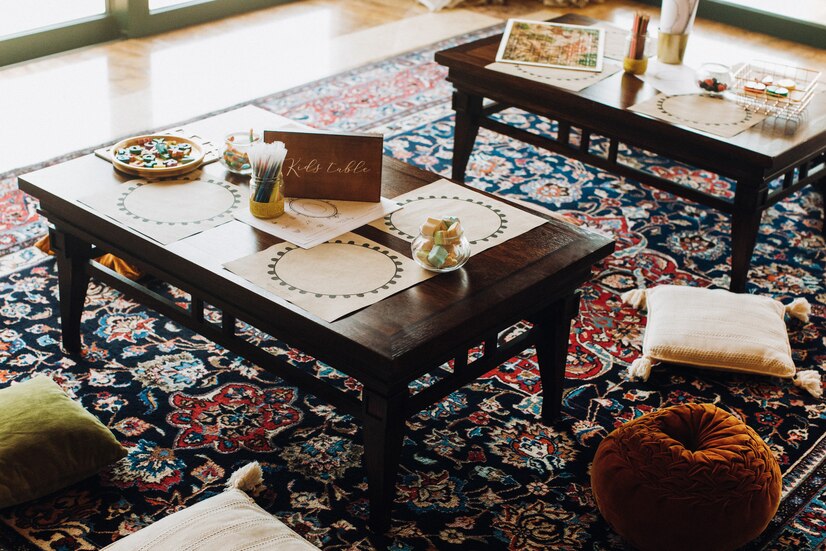Persian rugs, renowned for their intricate designs, rich history, and exquisite craftsmanship, have captivated the world for centuries. These timeless creations are not just floor coverings; they’re works of art that tell stories of tradition, culture, and heritage.
While the allure of traditional Persian rugs remains strong, there has been a noticeable shift in recent years towards modern interpretations of these classic designs. In this blog post, we’ll delve into the fascinating evolution of modern Persian rug designs, exploring the factors driving this trend and the creative innovations shaping the future of this ancient craft.
The Rich Tapestry of Persian Rug Tradition
To understand the evolution of modern Persian rug designs, we must first appreciate the rich tapestry of tradition upon which they are built. Persian rugs have a storied history that dates back thousands of years, with roots deeply embedded in the culture and artistry of ancient Persia (modern-day Iran).
Handwoven by skilled artisans using techniques passed down through generations, these rugs are characterized by their elaborate motifs, intricate patterns, and vibrant color palettes.
Traditional Persian rug designs are often inspired by nature, with motifs such as flowers, birds, and geometric shapes symbolizing elements of the natural world and the divine. Each region of Persia has its own distinct style, with variations in patterns, colors, and weaving techniques reflecting the unique cultural heritage of the area.
The Rise of Modern Persian Rug Designs
While traditional Persian rugs continue to hold a special place in the hearts of collectors and enthusiasts, there has been a growing demand for modern interpretations of these timeless treasures.
This shift can be attributed to several factors, including changing consumer tastes, advancements in technology, and a desire for designs that complement contemporary lifestyles and aesthetics.
One of the key drivers behind the rise of modern Persian rug designs is the increasing globalization of the rug market. As Persian rugs gain popularity in countries around the world, designers and manufacturers like Iconic Rugs are exploring new ways to adapt traditional motifs and techniques to appeal to a broader audience.
This has led to the emergence of hybrid styles that blend elements of Persian rug tradition with modern design sensibilities, resulting in rugs that feel both familiar and fresh.
Creative Innovations in Modern Persian Rug Design
Innovations in materials and production techniques have also significantly shaped the evolution of modern Persian rug designs. While traditional rugs are typically made from wool or silk, modern rugs may incorporate a variety of materials, including cotton, viscose, and even synthetic fibers.
These alternative materials offer greater versatility in terms of texture, color, and durability, allowing designers to push the boundaries of traditional rug-making and explore new creative possibilities.
In addition to experimenting with materials, designers are also embracing technology to enhance the design process and create truly one-of-a-kind rugs. Computer-aided design (CAD) software enables designers to visualize and manipulate patterns precisely.
At the same time, digital printing techniques allow for intricate details and complex color schemes that would be difficult to achieve by hand. The result is a new generation of Persian rugs that are as innovative as they are beautiful, blurring the line between art and design.
The Influence of Contemporary Trends
Contemporary design trends have also influenced the evolution of modern Persian rug designs, with designers drawing inspiration from fashion, architecture, and popular culture to create rugs that reflect the spirit of the times.
Minimalist interiors, for example, have spurred demand for rugs with clean lines and understated patterns, while eclectic spaces have embraced bold colors and geometric motifs inspired by mid-century modern design.
Similarly, the rise of sustainable living has prompted a shift towards eco-friendly materials and production methods in the rug industry.
Many modern Persian rug designers are now incorporating organic fibers, natural dyes, and fair trade practices into their production processes, appealing to environmentally conscious consumers who value both style and sustainability.
Preserving Tradition in a Modern World
Despite these innovations and trends, the essence of Persian rug tradition remains at the heart of modern designs. While modern rugs may depart from the strict conventions of traditional Persian rug-making, they still pay homage to the craftsmanship, artistry, and cultural heritage that have defined this ancient craft for centuries.
Preserving Persian rug tradition is not just about safeguarding ancient techniques; it’s a commitment to honoring a cultural heritage that spans millennia. It’s about recognizing the intrinsic value of handcrafted artistry and passing down the stories woven into each rug from one generation to the next.
In a modern world where trends come and go, preserving the Persian rug tradition is an ode to timeless elegance, craftsmanship, and the enduring beauty of heritage.
Conclusion
In conclusion, the evolution of modern Persian rug designs represents a dynamic fusion of tradition and trend, where the past meets the present in a celebration of creativity and innovation. As designers continue to push the boundaries of what is possible, the future of Persian rug design looks brighter than ever, promising to delight and inspire generations to come.




